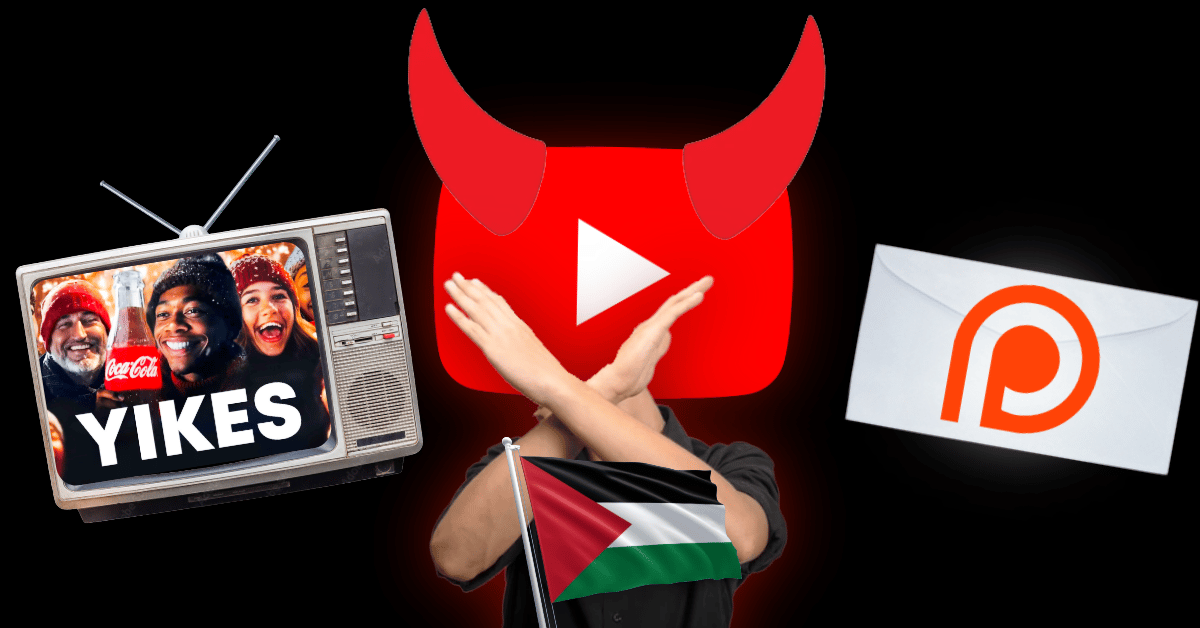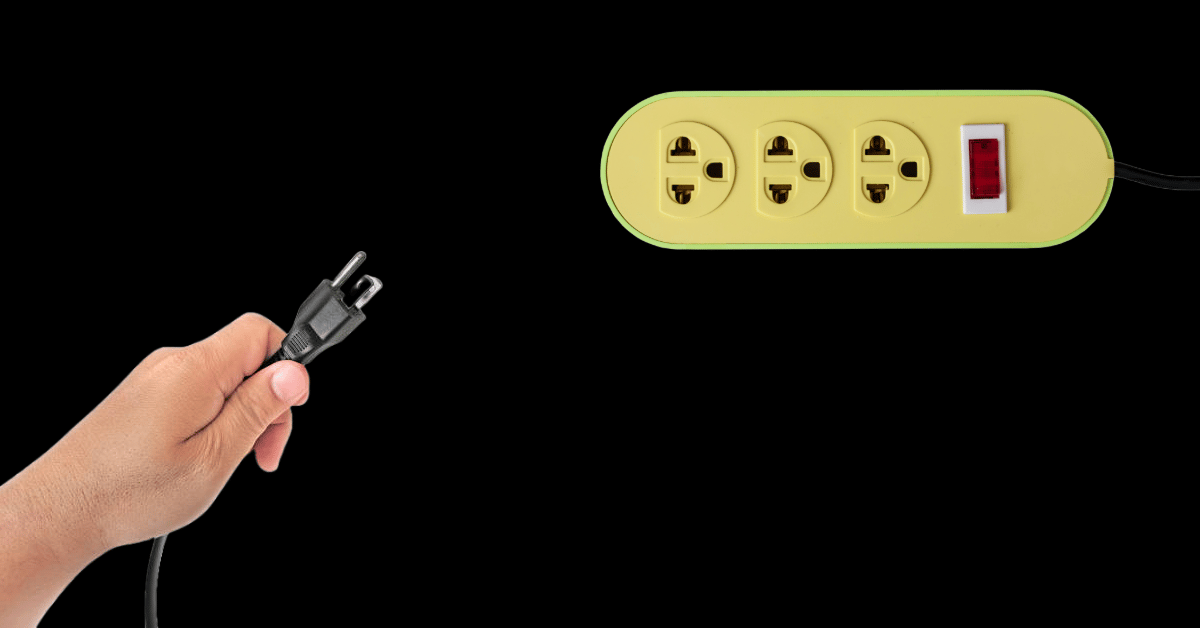
As marketers, it hurts us both when I say this: you’re talking to much.
I know that’s hard to hear. Yapping comes so naturally to us, it’s like I’m telling you you’re breathing too much, or sharing too much thought leadership on LinkedIn. But with attention spans reaching historic lows, the solution isn’t to spit out more and more messages. As the research shows, it all comes down to believability - not just how believable you are, but how much you trust consumers to believe in you.
- Devin Pike, Guest Editor 💜
WHAT’S HAPPENING IN MARKETING TODAY?
YouTube scrubs Pro-Palestine vids, Patreon launches newsletters & Coca-Cola’s Christmas ad is AI slop

YouTube removes Pro-Palestinian content after government request
One by one, they all bend the knee. Why am I not even surprised at this point. It’s just interesting to me that the same governments that hark on about freedom of speech are always the ones censoring things that don’t align with their narrative.
We’re seeing it everywhere: India, Turkey, Brazil, Australia, Russia and of course the US - governments ramping up censorship and control as they try to use social media’s reach for political advantage. The latest example of this is YouTube removing over 700 videos relating to Israeli human rights violations, at the behest of the US State Department.
Patreon launches newsletters.
Going after Substack, perhaps? Patreon has allowed users to publish newsletters for a while, but this update will make it even simpler to do so, enabling easier ways to draft and customise, while also having support for more media types, buttons and email insights.
Want to make a newsletter about soup? Patreon says it’s the perfect place. Check out what other creators are doing here.
Why does Coca-Cola keep spamming gen AI content? Because its working.
Slop for Christmas, y’all! A flood of seasonal campaigns from the beverage behemoth show Coca-Cola’s been a little heavy handed on the ol’ generative AI. But, despite everyone kicking up a fuss as they so often do for such cases, Coca-Cola remains committed. Why? Because the ad “scored off the charts” with consumers, according to Islam ElDessouky, global vice president for creative strategy and content at Coca-Cola.
“We’re going to keep going at it, to be honest with you, because it’s giving us the measurements, the metrics and the business results, and, at the same time, we’re learning how to do things differently,” ElDessouky said of AI. Basically, they DGAF if you don’t like it, enough people apparently do.
-Sophie Randell, Writer
Hey, do you like YAP?
If so, why not share it with a friend? The more we grow this thing, the more resources we can put into making it awesome for you. Even if every subscriber invites just 1 person to YAP, we’ll meet our growth goal for 2025. So, you in?
DEEP DIVE
You're talking too much (and everyone's noticing)

Marketers love to talk about shrinking attention spans, we’ve all run the goldfish comparison into the freaking ground.
But according to Shutterstock’s 2025 Creative Impact Report, contrary to popular belief, the real problem isn’t attention. it’s believability. The study found that consumer trust drops after just three campaign messages. In other words, every extra message you add chips away at credibility. Campaigns built around a single, clear idea across multiple formats deliver a whopping 40% more ROI than single-format efforts.
So basically, the more you say, the less people believe you. Kind of like irl: no one likes a serial yapper, let alone believes everything that comes out of their mouths.
The myth of "more is more"
If marketing had a drinking game, “multi-channel” would be the first shot. Everyone’s obsessed with showing up everywhere, but in the process brands have started confusing channels with messages. Suddenly, what should be a simple “Buy this” becomes “Buy this because it’s affordable, sustainable, empowering, premium, community-driven, ethically sourced, AI-enhanced, and also fun!".
It’s like each stakeholder wants to tape their own tagline to the campaign before it leaves the meeting room. The result is message bloat, and it’s not just annoying, it’s expensive. Every extra “angle” eats away at coherence, which eats away at trust, which ultimately eats away at ROI.
Believability is the new performance metric
Shutterstock’s data puts numbers to something we’ve all felt: audiences aren’t sceptical because they’re cynical. They’re sceptical because brands won’t shut the hell up. Three messages is the threshold before the human brain goes: “Wait… what are you actually trying to tell me?” Beyond that, consumers perceive inconsistency as dishonesty.
Meanwhile, campaigns that stick to a single core idea but flex it across formats perform 40% better. Because consistency doesn’t mean repetition, it means reliability. You’re not boring them, you’re building recognition. That’s why Nike can run a thousand creative executions, and they all ladder back to the same heartbeat: Just Do It. It’s also why brands that constantly pivot their messaging, one week purpose, next week discounts, next week community, end up sounding like they’re lying.
One message, many outfits
Simplicity isn’t silence, but strategy.
You can tell one story in many ways, the trick is to keep the DNA intact. Think of your core message as the outfit, and your formats as the accessories. You don’t change the person, you just dress them for different occasions. For example:
Core idea: “We save you time.”
TikTok: A chaotic “before and after” showing hours saved.
Billboard: “Time’s your most valuable currency.”
Email: “Here’s how we gave 10,000 people their Saturdays back.”
Each one says the same thing, emotionally and logically. You’re not switching personalities like Kevin Wendell Crumb. You’re scaling personality.
Beware of campaign creep
Campaign creep is what happens when your big idea goes through too many rounds of feedback. Suddenly, the one thing your campaign stood for now stands for six things and a corporate initiative.
You know that feeling when you scroll a brand’s Instagram and can’t tell what they actually sell anymore? That’s campaign creep in full force. Every time you add another message, you’re telling your audience, “We don’t know how to tell our own story.” And if you can’t do that, why would anyone want to hear it?
So, here’s your anti-bloat checklist
Before you hit launch on your next campaign, ask yourself:
Can your audience summarize it in one sentence?
If someone swapped out your logo, would the message still feel like you?
Does every channel echo the same emotional truth?
Have you chosen one main character (your core idea), or are you juggling a cast of seven?
If the answer to any of those makes you sweat… I’m sorry to tell you that you’re probably over-messaging.
So, to conclude: have more than you show, say less than you know
The marketing landscape is loud, fragmented, and full of competing agendas. The brands who succeed aren’t shouting the loudest, but speaking the clearest.
-Sophie Randell, Writer
TREND PLUG
“Doing what I want anyway”

This one’s for when you swore you’d take the advice or said you’d do the responsible thing... then immediately turned around and did the exact opposite thing anyway. We’ve all been there!
The audio comes from @nimpliq using Gary Glitter’s “Rock ‘n’ Roll (Part 2)”... aka the Joker song. So yeah, main character energy only. No dancing required, just pure delusional confidence.
Some of my favourite examples include:
How you can jump on this trend:
With the sound, Film yourself walking in slow motion (around 0.75 speed), looking smug and unbothered. Add on-screen text describing what you’re about to do that absolutely defies logic or someone's given advice.
A few ideas to get you started:
“Me omw to spend the ad budget on vibes and intuition”
“Me omw to post the original concept after the client picked the ‘safer’ version”
“Me omw to ignore the analytics after posting a funny video I thought would do well”
- Nico Mendoza, Intern
FOR THE GROUP CHAT
😲WTF: Keep this person away from mangoes
✨Daily inspo: Be optimistic and hopeful
🎧Soooo tingly: Rocks and Sand ASMR
🍝What you should make for dinner tonight: Korean BBQ MEATBALLS?!
ASK THE EDITOR

My business partner and I are thinking about starting a podcast for our makeup brand. Do you think it's worth doing? -Sam
Hey Sam!
Creating a podcast is a great way to create content for your brand. Because not only will you have the longform version, but you can also cut that up into shorts to post on your social channels. It's also a cool way to get to know other people in your industry by bringing them on as guests.
The thing about podcasts, though, is a lot of people start them and very few make more than a few episodes. So if I were you, I'd start recording your first few episodes ASAP.
Then just keep getting your reps in, learning as you go. Don't spend too long in the planning phase—otherwise you may never actually start!
[You also might want to check out Your dummy-proof guide to (finally) starting a podcast]
- Charlotte Ellis, Editor ♡
